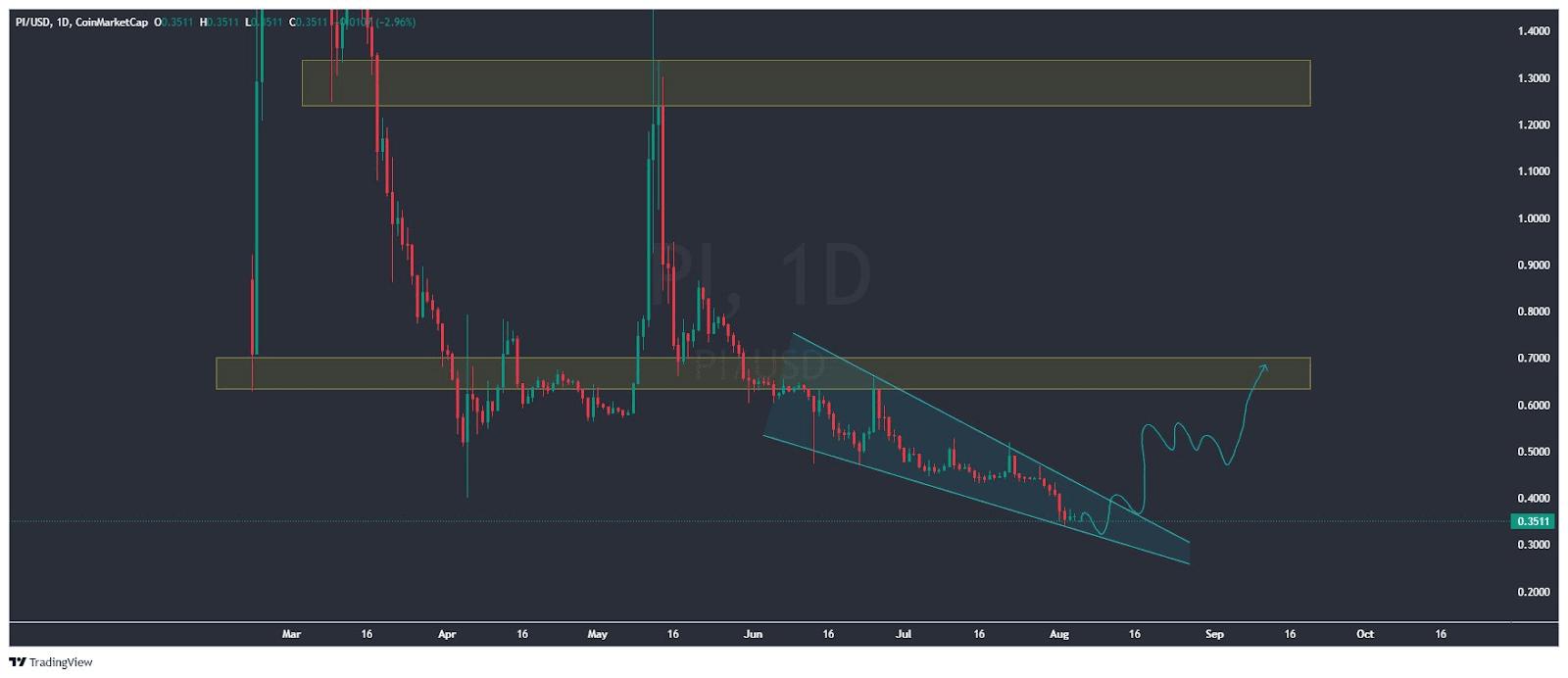Pi Network has increased by 10% in the past 24 hours, surpassing a critical resistance level and trading at $0.40 at the time of writing. This move could signal the beginning of a trend reversal, with the potential for a 40% price increase pushing the price up to $0.53.
When Pi Coin first appeared on exchanges, it reached an all-time high of $2.98. However, strong selling pressure and the general market downturn pushed the price down 86%, causing concern among investors. Looking at the current chart, experts see a bullish "descending wedge" pattern forming.

This pattern could lead to a strong breakout, although prices may also pull back before rising higher. The key support zone lies between $0.25 and $0.30. If the breakout is successful, the first support threshold could be in the range of $0.60–$0.70, with the potential to reach $1.20–$1.30 in the medium term.
What happens when Pi drops to $0.10?
In this context, cryptocurrency analyst Dr. Altcoin has provided an assessment of the future of the project. When asked what he would do if Pi dropped to $0.10, Dr. Altcoin simply replied: "I would buy more Pi!" He explained that his confidence in the project stems from a much larger picture: the convergence of artificial intelligence and Web3. He provided several reasons for his optimistic stance:
Compliance and accessibility:Integrated KYC/KYB, environmentally friendly mining, and applicable globally with over 70 million users in more than 200 countries.
Ecosystem services:Peer-to-peer payments using only Pi and partnerships with KYB-approved fiat-to-Pi conversion service providers in over 100 countries.
Payment range:Supports over 170 payment methods, including remittances, payroll, and e-wallets.
Innovation & Growth: Investment in AI App Studio with over 20,000 DApps built by Pioneers is queued for integration.
Looking to the future, the Pi Core Team is working to address the high supply issue of this coin, which is a barrier to price growth. Currently, the combination of technical signals, increasing market activity, and stable ecosystem upgrades suggests that prices may continue to rise.

